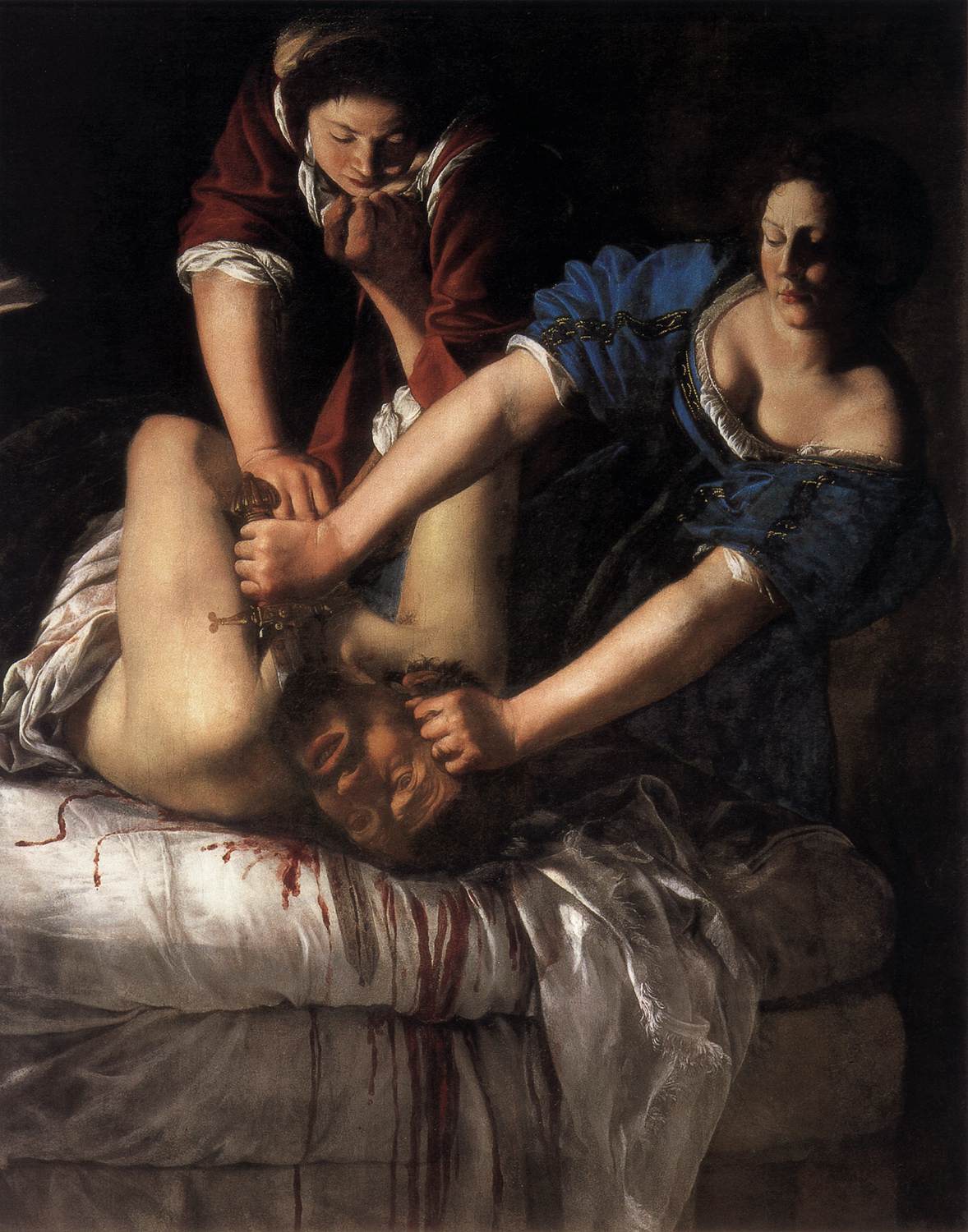I'll be tuning in to this tonight at 9pm on BBC Two...
It's the story of why there are so few women in the history of art. It starts with a trip to the Vasari Corridor in the Uffizi in Florence, which is filled with portraits of artists - but only 7% are by women. Basically there's no Old Mistresses, only Old Masters, not because of a lack of female talent, but because of the obstacles strewn in front of them by... men...!! .(shakes fist).
The programme discusses why women were confined to subordinate roles of models and muses in art rather than the makers, and it's sad to think of the generations of women who have been unable to fulfill their artistic roles in society because of society.
Professor Amanda Vickery marches seductively round Europe in a variety of curiously lumpy outfits,
(Copyright Matchlight Productions)
looking at women who did actually manage to break through the barriers to use their talent, and who painted the soul and crafted the fabric of the world around them through sheer bloody-minded tenacity.
Here she is again.
Professor Amanda Vickery marches seductively round Europe in a variety of curiously lumpy outfits,
(Copyright Matchlight Productions)
looking at women who did actually manage to break through the barriers to use their talent, and who painted the soul and crafted the fabric of the world around them through sheer bloody-minded tenacity.
Here she is again.
BBC
Prof Vickery certainly makes for an engaging narrator, but a curiously unknowledgable one. For, astonishingly for someone presented as the 'expert' of an art history programme, Prof V is neither an artist nor an art historian. Nope, she's a lecturer in British social, political and cultural history. Which is a a bit like having Prof Brian Cox presenting a programme on the Pre-Raphaelite Brotherhood.
So whilst Amanda makes you empathise with her subject matter, and appreciate the courage of the women who did defy convention, she is a curiously uninformed presenter. She gets excited over sculptor Properzia di Rossi's clunkily thick-limbed carvings, comparing them to Michaelangelo. They're not like Michelangelo..
Properzia de’ Rossi, Joseph and Potiphar’s Wife, Cathedral of San Petronio, Bologna, 1525-1526
Her judgement of what is 'good art' is therefore skewed by the fact that it's done by a female. Just because a woman has broken the mould to make it in a man's world, doesn't mean all female art is all 100% astonishing. But unfortunately the Prof doesn't have the art history clout to be able to make an informed decision on this.
So why have Amanda front the series? Because (a) she's a professor, and hopefully nobody will notice she's actually just a random professor, (b) she's got just the right amount of informed gravitas, if not the necessary knowledeable depth, and (c) she looks jolly nice in a frock.
"Amanda’s greatest weakness is a love of clothes," chirps the last line of her website homepage (www.amandavickery.com/) thus undermining any sense that the woman might actually have a brain. Have a look at her photo above - hand on hip in a minxy frock in a dining room. No cliches there, eh?
The fact that a non-expert has been chosen to front a programme on women in art fundamentally undermines the whole 'let's finally take women's art seriously' premise. Which is a real shame.
Anyway... the programme covers di Rossi, the first female sculptor, Sofonisba Anguissola, who painted at court and was admitred across her long life by both Michelangelo and van Dyke; Lavinia Fontana (who combined a career with being pregnant 11 times), Clara Peeters, and Judith Leyster who gave it all up at 26 to get married. Pah.
And, of course, the woman whom Germaine Greer called, in her clunkily leaden tome The Obstacle Race, 'the magnificent exception' - radfem heroine, Artemisia Gentileschi. Read more about her in my blog HERE.
Despite being raped by her tutor, Artemisia testified against him during a 7-month long-drawn out trial, during which her reputation was dragged through the mud. She eventually resorted to offering to be tortured with thumb-screws to prove she was telling the truth - risking ruining the very hands with which she painted to prove her innocence.
Now that's bravery.
Artemisia Gentilieschi, Judith Slaying Holofernes (Oil on canvas, 1620)
Despite being raped by her tutor, Artemisia testified against him during a 7-month long-drawn out trial, during which her reputation was dragged through the mud. She eventually resorted to offering to be tortured with thumb-screws to prove she was telling the truth - risking ruining the very hands with which she painted to prove her innocence.
Now that's bravery.
BBC
Read more in the producer's blog HERE.
If you've any interest in art, tune in. If you've any knowledge of art, shed a small tear.
And Prof V - if your greatest weakness really is your love of clothes (rather than your lack of a degree in Art History), then please, get some decent foundation garments.

Thank you! A weeping art historian agrees with you!
ReplyDeleteGosh, well thank you!
ReplyDelete